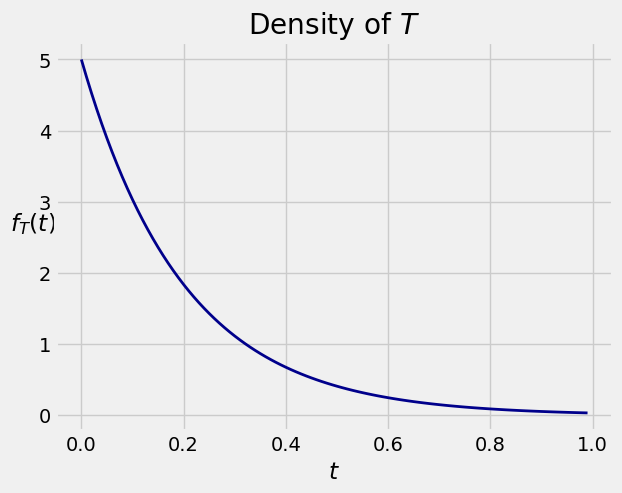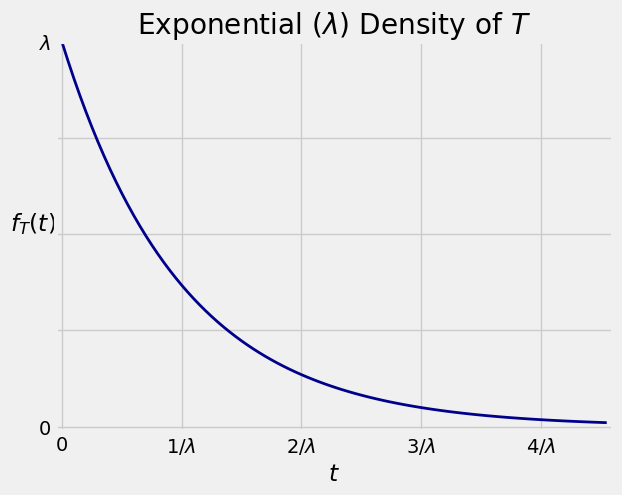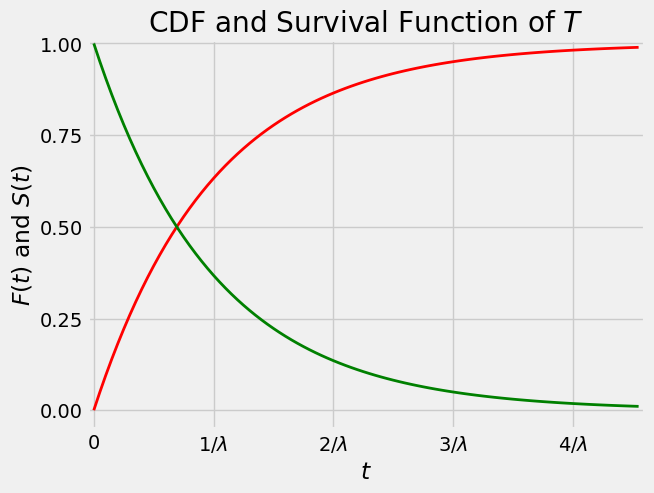15.4. Exponential Distribution#
A random variable
The graph below shows the density

See More
15.4.1. CDF and Survival Function#
The exponential distribution is often used as a model for random lifetimes, in settings that we will study in greater detail below. For now, just think of
The complementary event is that the object survives past time
Quick Check
Let
Answer
Quick Check
Let
Answer
Density at
15.4.2. Mean and SD#
To find
either by integration by parts or by recognizing the indefinite integral of
To find
Later in the course we will see how to find
The graph below shows the density

Quick Check
Let
Answer
15.4.3. Median#
Here are graphs of the cdf and the survival function.

Notice that the two curves intersect at the vertical level 0.5. If
and therefore
The point
Because
The exponential distribution is often used to model lifetimes of objects like radioactive atoms that undergo exponential decay. The half life of a radioactive isotope is defined as the time by which half of the atoms of the isotope will have decayed. That is, the half life is the median of the exponential lifetime of the atom. The parameter
Quick Check
Let
Answer
See More
15.4.4. Memoryless Property#
Let
Notice that
This is called the memoryless property of the exponential distribution. It can be shown that the exponential and the geometric are the only two distributions that have the memoryless property. As you can see, the graph of the exponential density resembles the geometric probability histogram. It can be thought of as a continuous limit of the geometric, as we will see later.
The memoryless property is an excellent reason not to use the exponential distribution to model the lifetimes of people or of anything that ages. For lifetimes of things like lightbulbs or radioactive atoms, the exponential distribution often does fine.
15.4.5. The Rate#
If
The left hand side is the chance that the object dies immediately after time

